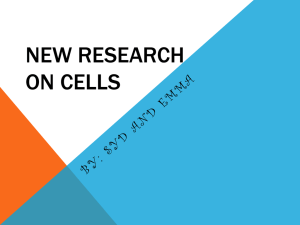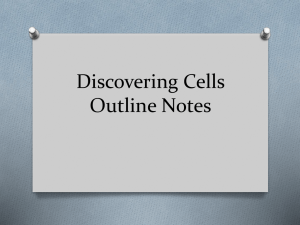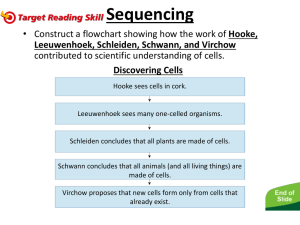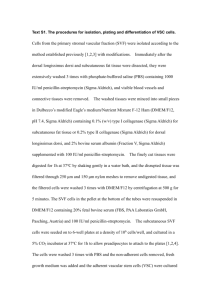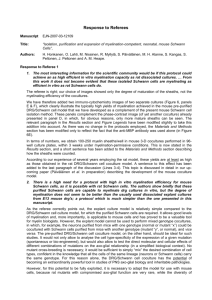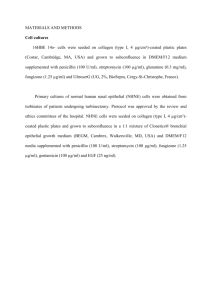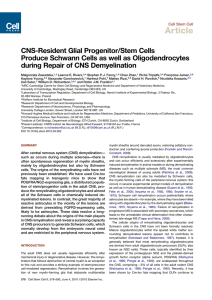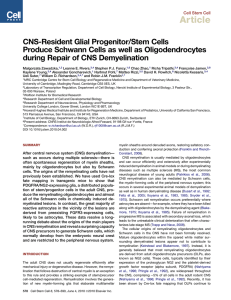Culturing Nerve Cells (Cellular and Molecular Neuroscience ) By
advertisement
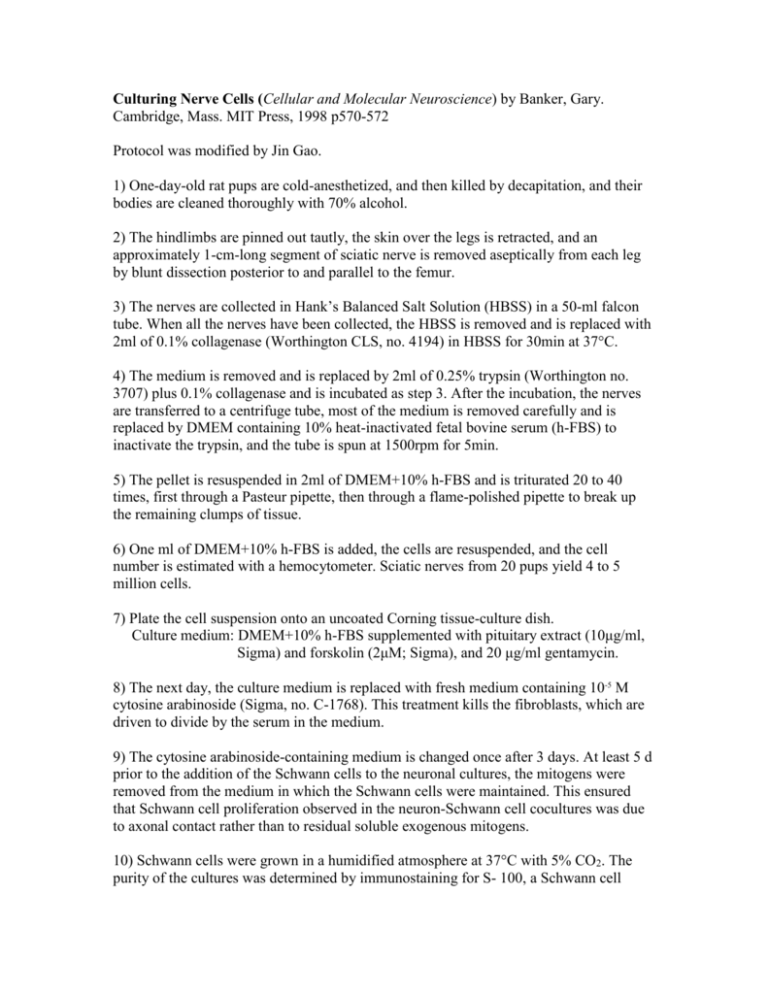
Culturing Nerve Cells (Cellular and Molecular Neuroscience) by Banker, Gary. Cambridge, Mass. MIT Press, 1998 p570-572 Protocol was modified by Jin Gao. 1) One-day-old rat pups are cold-anesthetized, and then killed by decapitation, and their bodies are cleaned thoroughly with 70% alcohol. 2) The hindlimbs are pinned out tautly, the skin over the legs is retracted, and an approximately 1-cm-long segment of sciatic nerve is removed aseptically from each leg by blunt dissection posterior to and parallel to the femur. 3) The nerves are collected in Hank’s Balanced Salt Solution (HBSS) in a 50-ml falcon tube. When all the nerves have been collected, the HBSS is removed and is replaced with 2ml of 0.1% collagenase (Worthington CLS, no. 4194) in HBSS for 30min at 37°C. 4) The medium is removed and is replaced by 2ml of 0.25% trypsin (Worthington no. 3707) plus 0.1% collagenase and is incubated as step 3. After the incubation, the nerves are transferred to a centrifuge tube, most of the medium is removed carefully and is replaced by DMEM containing 10% heat-inactivated fetal bovine serum (h-FBS) to inactivate the trypsin, and the tube is spun at 1500rpm for 5min. 5) The pellet is resuspended in 2ml of DMEM+10% h-FBS and is triturated 20 to 40 times, first through a Pasteur pipette, then through a flame-polished pipette to break up the remaining clumps of tissue. 6) One ml of DMEM+10% h-FBS is added, the cells are resuspended, and the cell number is estimated with a hemocytometer. Sciatic nerves from 20 pups yield 4 to 5 million cells. 7) Plate the cell suspension onto an uncoated Corning tissue-culture dish. Culture medium: DMEM+10% h-FBS supplemented with pituitary extract (10μg/ml, Sigma) and forskolin (2μM; Sigma), and 20 μg/ml gentamycin. 8) The next day, the culture medium is replaced with fresh medium containing 10-5 M cytosine arabinoside (Sigma, no. C-1768). This treatment kills the fibroblasts, which are driven to divide by the serum in the medium. 9) The cytosine arabinoside-containing medium is changed once after 3 days. At least 5 d prior to the addition of the Schwann cells to the neuronal cultures, the mitogens were removed from the medium in which the Schwann cells were maintained. This ensured that Schwann cell proliferation observed in the neuron-Schwann cell cocultures was due to axonal contact rather than to residual soluble exogenous mitogens. 10) Schwann cells were grown in a humidified atmosphere at 37°C with 5% CO2. The purity of the cultures was determined by immunostaining for S- 100, a Schwann cell marker, Thy- 1.1, a fibroblast marker, and 0X-42, a macrophage marker. The Schwann cell populations obtained are more than 95% pure and can be used immediately. Cells are passaged every 7 to 10 days. Subsequently, these cells can be used for transfer onto DRG neurons, where full functional expression is observed. Excessive amplification of Schwann cell populations with soluble mitogens is to be avoided because transformation may occur after 11 or 12 passages (4 months).
